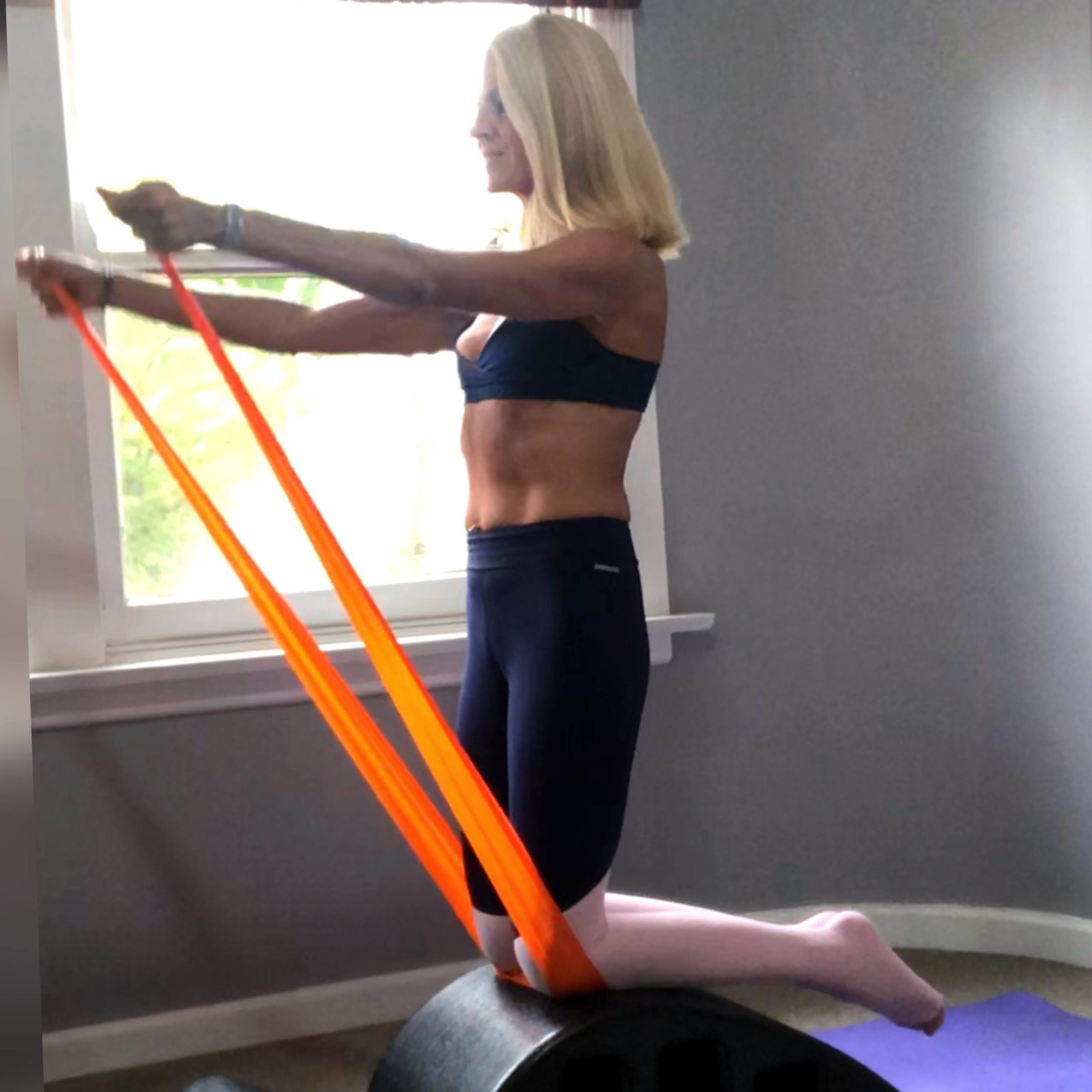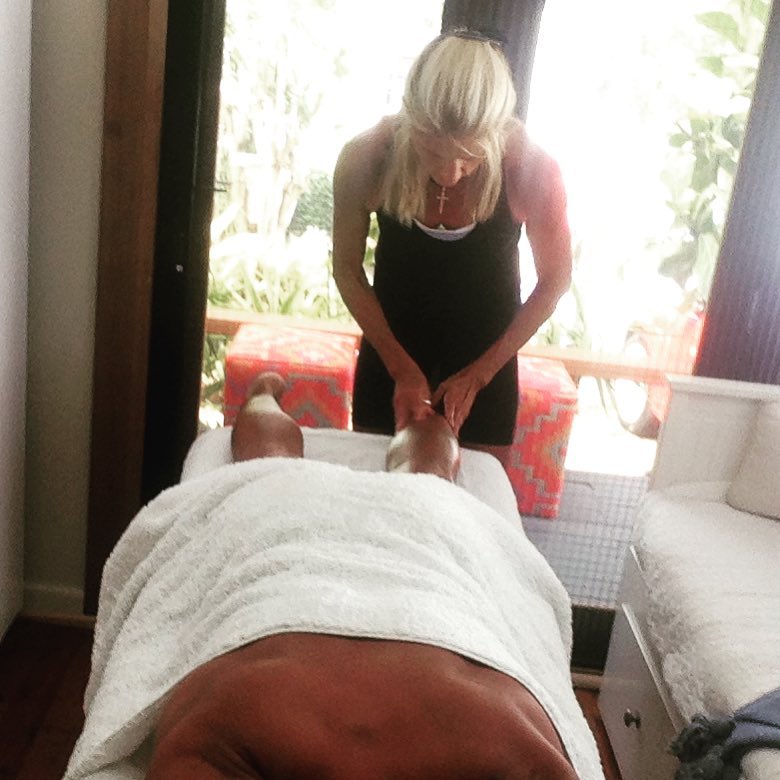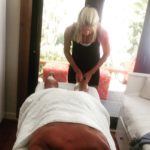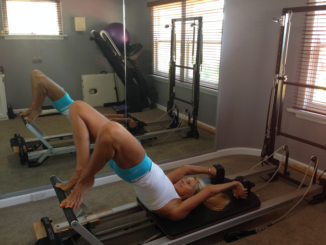
by Fitman007 | Jan 19, 2018 | Training Tips
As like food, sometimes the most simplest things in life are the most delicious 😋 My focus this morning was all about moving the spine, whilst aiming at improving shoulder joint ROM. Utilizing the bosu and my tower, which can also be done over a #swissball kneeling. Movements of the thoracic spine are required for optimal shoulder functioning. Single arm full range abduction requires thoracic lateral flexion, and if both arms are raised into abduction or flexion it requires some thoracic extension mobility. If the thoracic spine is held in kyphosis, the scapulae must also move in a relatively anterior-tilted, downward-rotated and protracted position – a position linked with glenohumeral joint impingement flexion, rotation and extension. Tight lats also is a common issue, either from training load, lack of flexibility, or simply from posture positions. As I extend my arm above my head I lengthen my lats. The lats attach from the humerus (upper arm bone), down to the thoracolumbar fascia, which inserts directly into the pelvis, part of our oblique fascia sling.
The lats function to extend and internally rotate the arm as well as to extend the lumbar. When restricted, the lats have the potential to limit shoulder flexion (bringing the arms overhead), external rotation (rotating the thumb back) and lumbar flexion.
So let’s get moving to increase movement patterns.

by Fitman007 | Jan 16, 2018 | Remedial Massage

Massage for varicose veins. Varicose veins are fairly prevalent amongst the general population. Genetics can also play a significant role in whether or not you will develop varicose veins during your life. When the valves in the veins do not close properly as the veins become dilated then the blood can flow into superficial veins which cause them to dilate further. If there is continued constriction of blood flow in the veins to the heart (eg from constant standing) then the blood can pool in the legs and the veins can lose their elasticity. The result is the bulbous thick veins. However, with suitable training and approval of client’s doctors, massage can provide benefit for those who are affected by this condition, as my partner has discovered. My approach to this condition is using massage strokes that are short and of light pressure, more aimed at promoting local circulation and/or lymphatic drainage. Strokes such as petrissage, deep tissue frictions, stripping and cross-fibre are never recommended. After treatment I will elevate the legs to promote venous return.

by Fitman007 | Jan 10, 2018 | Training Tips
If you have ever felt back pain, or pelvis instability, you may be simply ” out of whack” The most common mis-fire…
Glutes that don’t fire in sequence resulting in the low back muscles “taking up the glutes’ workload slack.”
Just like a car engine and its pistons, there is an ideal firing order for the muscles in a movement sequence.
For example, as we walk, the following is the muscle firing sequence that propels us forward. To get an idea, imagine that your right leg is in the back position of your of your gait.1st muscle to fire: Right Hamstrings 2nd muscle to fire: Right Glutes 3rd muscle to fire: Left back erector muscle (the ~ 1″ muscle that lies alongside your spine) 4th muscle to fire: Right back erector muscle (the ~ 1″ muscle that lies alongside your spine). Let’s get our glutes firing so we can walk, jump and run without disfunction.

by Fitman007 | Jan 9, 2018 | Training Tips

Happy New Year.
Part of anyone’s health program should incorporate a great flexibility program.
In doubt? This may help to understand why.
The effects of being inflexible.
Inadequate flexibility will have a negative effect on the body in 3 significant ways:
1. Joints require movement through a full range of motion to maintain the health of cartilage and other structures within the joint with increased blood supply and nutrients to joint structures with increased quantity of synovial joint fluid (oil in the crank case). This effect can be particularly noticeable in weight bearing joints such as the hips and knees.
2. Muscles that are inflexible tire more quickly, causing opposing muscle groups to work harder. Muscle fatigue can lead to muscular injuries and the inability of the muscles to protect joints from more severe injuries. For example, the hamstrings play a role in stabilizing the knee and preventing ACL tears.
3. Decreased flexibility may also lead to abnormal stress on structures and tissues distant from the initial site of inflexibility. One example of this is that tendonitis in the knee can be related to calf tightness.
Additional benefits of a regular stretching routine.
1. Increased neuromuscular coordination
2. Return of muscle to natural resting state
3. Modifying blood pooling, recirculation.
Adding regular massages into your training regime will aid in recovery and joint mobility

by Fitman007 | Jan 9, 2018 | Remedial Massage
I love a brand new year, getting in-touch with our inner self.
One of the powerful tools that can promote many health benefits is massage, especially if you love training.
Massage is generally considered part of complementary and alternative medicine. It’s increasingly being offered along with standard treatment for a wide range of medical conditions and situations.
Studies of the benefits of massage demonstrate that it is an effective treatment for reducing stress, pain and muscle tension.
While more research is needed to confirm the benefits of massage, some studies have found massage may also be helpful for:
• Anxiety
• Digestive disorders
• Fibromyalgia
• Headaches
• Insomnia related to stress
• Myofascial pain syndrome
• Soft tissue strains or injuries
• Sports injuries
• Temporomandibular joint pain
Beyond the benefits for specific conditions or diseases, some people enjoy massage because it often produces feelings of caring, comfort and connection.
Despite its benefits, massage isn’t meant as a replacement for regular medical care. Let your doctor know you’re trying massage and be sure to follow any standard treatment plans you have.
Some forms of massage can leave you feeling a bit sore the next day. But massage shouldn’t ordinarily be painful or uncomfortable. If any part of your massage doesn’t feel right or is painful, speak up right away. Most serious problems come from too much pressure during massage.
The take-home message about massage
Brush aside any thoughts that massage is only a feel-good way to indulge or pamper yourself. To the contrary, massage can be a powerful tool to help you take charge of your health and well-being, whether you have a specific health condition or are just looking for another stress reliever. You can even learn how to do self-massage at home. Speak to me further when you next visit.








